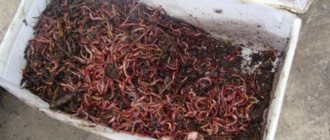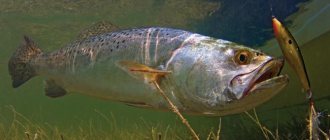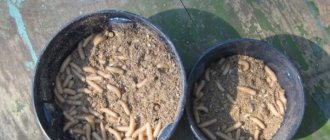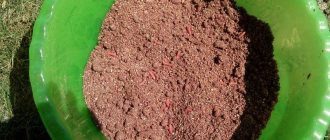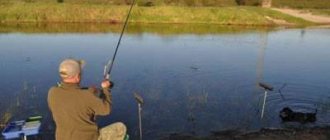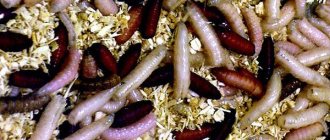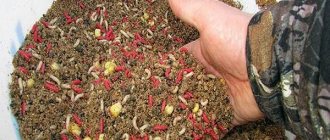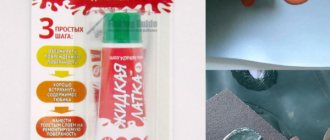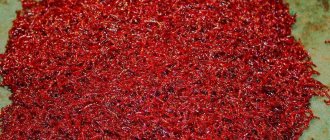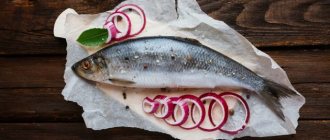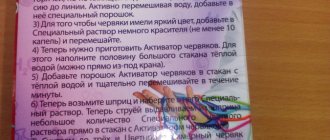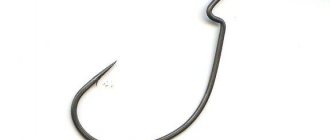Why breed worms at home? Firstly, it is a way to recycle food waste and then use it in the garden. Secondly, for fishing, so as not to buy expensive bait in fishing stores. Thirdly, they are suppliers of valuable fertilizer for indoor flowers.
Of course, you can buy vermicompost in the store, but its price is quite high, and a family of 3–4 people can feed a small earthworm farm with table waste alone, providing the plants with valuable fertilizer.
Entrepreneurs whose business is based on breeding fish in a pond can be advised to sometimes feed fry and adults with protein foods to strengthen the immune system and ensure good development.
Benefits of Organic Farming
The main value of breeding worms is for garden plants. The fact is that coprolites contain humic acids, which are stimulants for crop growth.
Humates – salts of humic acids in the form of sodium and potassium – are natural food for plants. This fertilizer is fermented by the digestive juices of earthworms and contains beneficial microflora that can restore the soil.
All fruit and berry crops prefer organic fertilizers. Organic fruits gain more vitamins, which has been proven by scientists. The plants themselves are better protected from diseases, since humates contain bactericidal substances.
If you grow organic products for sale and confirm them with appropriate certificates, you can get more money for them. Eco-friendly raw materials are used to make baby food, and summer residents themselves will be pleased to know that all vegetables and fruits do not contain any chemicals and are absolutely safe.
Settlement
Under good conditions, after about 2 months, the dung worm population can increase 2-6 times. This will indicate that the worms should be resettled. They are settled using exactly the same technology, and for this you will need to prepare several boxes.
Of course, several boxes for one fisherman is too much, but having a box on hand in which you can always catch a dung worm is what you need. After all, there are periods, both in summer and winter, when you will not find either a dung worm or an earthworm, this is especially true in the height of summer, when it is hot outside and the worms burrow into the ground and it is very difficult to get them out.
The value of vermicompost
Vermicompost has a positive effect on the chemical, physical and biological condition of the soil. Its acidity is neutral, so the substance can be added to the soil to increase the pH. True, its amount should not exceed 3 - 5% of the total mass of soil, because in large quantities vermicompost can inhibit the development of crops.
Auxins, heteroauxins are chemical substances that are called growth stimulants or accelerators. The coprolites of worms contain a lot of them, so it is good to feed the seedlings with vermicompost in the spring to prevent them from freezing.
Not only humus - processed plant residues - is valuable, but also the earthworms themselves. They can be sold to neighboring summer residents for breeding, fishing and feeding poultry and animals. As mentioned above, you can pour an extra batch into a nearby pond - the fish will eat them with pleasure.
Protein meal is suitable for aquariums and cattle. Meat with this method of feeding exceeds that of the same type in terms of protein.
Materials and methods
The research was carried out in the biotechnological complex on the basis of the Tatar Scientific Research Institute of Agriculture of the Russian Agricultural Academy.
The object of research was cattle manure, pig, horse and poultry manure and the final product of their bioconversion - vermicompost.
The vermicomposting process took place on an open, flat area in the spring-summer period and in a closed room of a heated biotechnological complex (year-round cycle) with an area of over 80 m2, also equipped for a queen cell of worms. Heaps of cattle bedding manure, poultry manure, horse and pig manure, which went through a fermentation stage, were formed to be 2 m long, 0.7 m wide and 0.7 m high. Under natural conditions, the fermentation process takes a fairly long period. Fermentation of horse and cattle manure lasts 6 months, pig manure – 9-10 months, chicken manure – 15-16 months. The substrates were populated with the same amount of vermiculture - the red Californian hybrid Lombricus rubellus, purchased from LuKa LLC, Naberezhnye Chelny.
During the vermicomposting process, raw materials are processed simultaneously by worms, protozoa and microorganisms. Throughout the entire cycle, optimal conditions were maintained in the piles: temperature 20...250 C, since worms cannot tolerate temperatures below 00 C and above 420 C, humidity 75.0 - 85.0%, pH 6.7 - 7.5 by periodically loosening and watering. The biotechnological process is based on the ability of worms to ingest pieces of organic matter, transform it in the intestinal cavity and excrete it in the form of coprolites. The entire processing cycle, depending on the decomposed materials and composting conditions, was 3-4 months. At the end of the cycle, piles with a fresh source of raw materials were formed nearby, and the worms independently moved to new areas, and the vermicomposting process was repeated again, and the processed raw materials were freed from the remaining worms. The finished vermicompost was dried to a moisture content of 50.0 - 55.0%, sieved and used as fertilizer. Agrochemical studies to determine pH, organic matter, total phosphorus, nitrogen and potassium were carried out in accordance with GOST: 26712-94, 27979-88, 27980-88, 26717-85, 26718-85, determination of hydrolytic acidity using the Kappen method as modified by TsINAO , GOST 26212-91; determination of the amount of absorbed bases using the Kappen method, GOST 27821-88; determination of heavy metals - by the atomic absorption method, according to methodological instructions (Guidelines for crop production and feed).
What are the benefits of producing vermicompost?
The benefit from breeding worms is, first of all, the useful disposal of food waste, because feeding worms at home can be done with any products:
- cereal remains;
- eggs and shells;
- tea and coffee brewing;
- vegetable and fruit peelings;
- rotten vegetables;
- fallen leaves, hay, tops.
In this case, fertilizer can be obtained free of charge. It will only take time to care for the boxes with the worm family.
Varieties of worms that are profitable to breed
There are several varieties of earth animals that you can buy or dig up, place in containers with suitable conditions - humidity and air holes - and start feeding them.
You can start producing vermicompost with ordinary earthworms from your plot. They are usually well adapted to local conditions and take root faster. To do this, you need to dig up a few pieces in the garden and place them in a nutrient medium.
If food and water are available, they will begin to reproduce. The disadvantage of this species is that they do not reproduce as quickly as purchased breeding specimens. In order to master the process, these are also suitable, and then you can get hold of it and buy, for example, red Californian worms.
Conditions for California Reds
This is the most popular variety of creeping workers on private vermifarms. They are undemanding when it comes to nutrition, the main thing is that food is supplied regularly. They reproduce quickly: just two individuals can breed 1,500 young in a year.
They become sexually mature at the age of 3 months and begin to mate regularly - up to 7 times a day. At the same time, the lifespan of KKCH is up to 16 years, which is 4 times longer than that of an ordinary garden representative of the soil fauna.
For breeding you need to buy at least 1,500 pieces. 1 cubic meter of soil can accommodate 3 families. When breeding, they must be placed in other boxes. This is where it’s time to think about marketing – where to sell the biomaterial.
The disadvantage of this breed is that at temperatures below +10 degrees they form a ball and freeze. The fact is that California, where the worm was brought from, is a warm place and soil insects do not need to seek shelter. If you are breeding this species, you need to take care of the wintering place in advance and move them there in advance so that the productivity of vermicompost does not decrease.
Prospector
For Russian conditions, this type is best suited. Its fertility is high, but its temperature range is much wider. The miner's behavior is different in that when cold weather sets in, he burrows deep into the ground and continues to work - eating organic matter and releasing coprolites.
In terms of productivity, the prospector is ready to compete with the red Californian. Over the course of a year, the family produces up to 100 kg of fertilizer and increases the livestock a thousand times. The main advantage of the variety is disease resistance.
How to properly feed worms
At your summer cottage there will always be something to feed the worms at home. According to reviews from people who have tried growing, the problem is different:
- how to arrange boxes so that animals feel good all year round;
- where to place containers for the winter;
- what foods they like best and how to prepare them.
An example can be given of an unsuccessful attempt to cultivate dung worms. In winter everything was fine - the creepers were regularly given fertilizer, but in the summer they all died. As it turned out, the problem was a lack of air, since the holes were not made.
Humidity level
The degree of humidity can be checked in a simple way without instruments. Take food for worms into your palm and squeeze it into a fist - if moisture concentrates and flows between your fingers, it means it is waterlogged. If there are no smudges, and the surface of the hand remains wet after squeezing, the humidity is optimal. If the contents in your hand leave virtually no traces of moisture, or even crumble, it needs to be moistened. Optimal humidity is 70-80%.
Preparing feed at the dacha
One of the options for preparing food for worms on the site is a prepared compost pit or box. In spring, summer and autumn, plant residues are laid down. At the end of autumn, making a hole in the center to the very bottom with a diameter of 10 centimeters, before the onset of severe frosts, add fresh cattle manure. By the onset of a moderately warm spring, the compost will be completely ready. It will be possible to populate it in the amount of 750-1500 adults per square meter, preferably with fry and cocoons. After processing by worms, vermicompost is produced - a valuable organic fertilizer used all over the world.
You can order worms for breeding from our website.
How to sell products
While the process of mastering production is underway, you can use the fertilizer yourself - in the garden and for house plants. As soon as the family grows, you need to think about where you can sell the leftovers. These are shops for fishermen, pet stores where they sell various birds - you can supply individuals for their food.
If there is no place to reproduce worms, some of them are processed for the production of protein flour. This substance can also be applied to the soil or fed to pets. It is stored in the refrigerator or basement, after drying well.
Did you like the article? Share with your friends:
Hello, dear readers! I am the creator of the Fertilizers.NET project. I am glad to see each of you on its pages. I hope the information from the article was useful. Always open to communication - comments, suggestions, what else you want to see on the site, and even criticism, you can write to me on VKontakte, Instagram or Facebook (round icons below). Peace and happiness to everyone!
